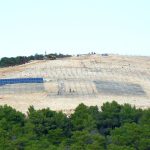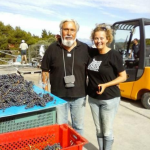Why should the smoke just disappear into the wind when it can be turned into electricity? HEP has big plans for the unassuming Savica heating plant chimney next to the Sava river in Zagreb.
As Poslovni Dnevnik writes on the 17th of February, 2020, in this way, HEP wants to harness the thermal energy of waste flue gas from the Savica heating plant chimney, which is currently being released through the chimneys into the environment, and would also show the possibility of the alternative use of existing chimneys.
“One of those options is a process where a chimney is used as a plant for converting heat to electrical energy using an air booster effect,” HEP explained to Vecernji list, which will soon announce a tender for a project worth around five million kuna in total. They detailed precisely what the job of the company that offers them the best deal for the Savica heating plant’s chimney will be.
“A thermal power plant is a type of power plant that uses heated air buoyancy and the height difference of the tower to launch an air turbine and generate electricity. The flue gases inside the chimney have a lower density than the surrounding atmospheric air. This establishes a pressure difference between the gases inside the chimney and the surrounding air, resulting in the flow of lighter flue gas from the bottom to the top of the chimney. The greater the difference in pressure – the greater the volume flow of the mixture of ambient air and flue gas,” they explained from HEP, adding that the flue gas temperature at the inlet to the chimney is about 150 degrees celsius and, therefore, it has a relatively high thermal potential.
This heat, they explain, is currently only used to achieve flue gas build-up, that is, to create a vacuum in the chimney. And there are two main ways, as they say from HEP, to harness the energy of flue gas buoyancy. One is the installation of a wind turbine in the centre of the lower part of the Savica heating plant chimney itself.
“In order for this solution to be implemented, it’s necessary to undertake a quality analysis of the equipment that can potentially be installed,” they say from HEP, stating that electricity can also be produced by entering the main flue duct and erect a new branch of the channel to house a wind turbine. That new duct would be fused at a 45-degree angle to the existing one in order to reduce local flow resistance.
“This would mix ambient air into the main flue gas stream. The air flow is proportional to the pressure exerted in the main flue duct. The flow through the wind turbine or channel branch will be regulated by movable control flaps. This will also regulate the temperature of the mixture of flue gases and air entering the chimney, that is, the pressure created by that buoyancy,” HEP Production explained in detail.
A future designer will have to do a study in which they will analyse the possibilities of creating one of these ideas within the Savica heating plant’s chimney.
When exactly the chimney of the thermal power plant located next to the Sava could start producing electricity will depend on the design of the project itself and then on the execution of the works.
Make sure to follow our dedicated business page for more.










